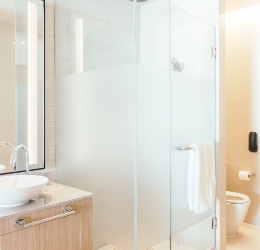Maintaining the exterior walls of your home is crucial for preserving its aesthetic appeal and structural integrity. One common issue that homeowners face is the growth of mold and mildew on exterior walls. Mold and mildew not only detract from the appearance of your home but also pose health risks to you and your family. This comprehensive guide will help you understand the causes of mold and mildew, how to effectively remove them, and the best practices for preventing their return.
Causes and Health Risks of Mold and Mildew
Mold and mildew thrive in damp, humid environments, making exterior walls susceptible, especially in regions with high rainfall or humidity. These fungi feed on organic materials found on many wall surfaces, such as paint, wood, and stucco. The presence of mold and mildew can lead to respiratory issues, allergic reactions, and other health problems for residents.
Safety Precautions and Protective Gear for Removal
Before tackling mold and mildew removal, it is essential to take safety precautions to protect yourself. Wear protective gear, including gloves, goggles, and a mask, to avoid direct contact with mold spores and prevent inhalation. Ensure proper ventilation in the area where you are working.
Effective Cleaning Solutions and Methods
To remove mold and mildew, you can use various cleaning solutions, including commercial mold removers or homemade mixtures such as vinegar and water or bleach and water. Here’s a step-by-step guide to effective mold and mildew removal:
- Preparation: Remove any furniture or decor near the affected area. Cover plants and landscaping with plastic sheeting to protect them from cleaning solutions.
- Cleaning Solution: Mix a solution of one part bleach to three parts water (or use a commercial mold remover).
- Application: Using a brush or sponge, apply the solution to the affected areas, ensuring thorough coverage. Let it sit for about 15 minutes to penetrate and kill the mold.
- Scrubbing: Scrub the area with a stiff brush to remove the mold and mildew. For stubborn stains, you may need to reapply the solution and scrub again.
- Rinsing: Rinse the cleaned area thoroughly with water to remove any residue from the cleaning solution.
- Drying: Allow the area to dry completely to prevent further mold growth.
Long-term Prevention Strategies
Preventing mold and mildew from returning involves addressing the underlying causes of dampness and humidity. Here are some effective strategies:
- Improve Drainage: Ensure that your home’s gutters and downspouts direct water away from the exterior walls. Check for any leaks or blockages that could cause water to pool near the foundation.
- Seal Cracks and Gaps: Inspect your exterior walls for any cracks or gaps that could allow moisture to seep in. Seal them with appropriate caulking or weatherproofing materials.
- Regular Cleaning: Regularly clean your exterior walls to remove dirt, debris, and organic materials that can encourage mold growth.
- Waterproofing: Consider applying a waterproof sealant to your exterior walls to create a barrier against moisture.
By following these steps, you can effectively remove mold and mildew from your exterior walls and implement preventative measures to keep them from returning.
For professional assistance with mold and mildew removal or any other home exterior needs, trust the experts at Orlando Dry Wall Installation Pros. Their team provides top-notch service to ensure your home remains beautiful and structurally sound.









